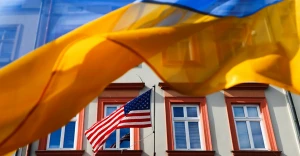
Armored taxi: why Stryker APC plays key role in Ukrainian counteroffensive
The US Stryker armored fighting vehicle can operate in almost any weather, providing reliable protection for infantry and quick maneuvering on the battlefield
Espreso explains what makes Stryker special, how they can help in the counteroffensive, and how many of them have already been sent to Ukraine.
What makes Stryker APCs special and how they help in a counterattack
A successful counteroffensive needs both tanks and armored personnel carriers (APCs). Armored vehicles protect against mines and quickly transport infantry to clear enemy areas. APCs are equipped with weapons like machine guns, grenade launchers, or anti-tank missiles, supporting infantry with heavy firepower in counterattacks, reducing the impact of enemy forces. In short, APCs play a crucial role in supporting and protecting military units during counteroffensive operations, providing mobility, fire support, and protection for successful missions.
Stryker APCs are powerful and versatile eight-wheeled armored combat vehicles used by the US Army. They handle various military tasks, including counterattacks, reconnaissance, and combat in different environments.
These APCs were named after two American soldiers - Sergeant John Stryker, who distinguished himself in World War II battles, and Private Robert Stryker, who died in the Vietnam War.
Stryker APCs were developed in the late 90s with the aim of quickly responding to crises anywhere in the world. The first Strykers were used by the US Army in February 2002, based on the Canadian LAV III light infantry fighting vehicle. Initially, there were some issues with the first batch, but they were fixed within a year. Over 4,000 Stryker APCs were manufactured and delivered to the US Army in 10 years. There are 10 variations of these APCs designed for different tasks.
The main feature of Stryker APCs is their mobility with a wheelbase, providing high speed on roads and in urban areas. They also have an effective armored body, protecting the crew from small arms, artillery shells, and mine explosions. Additionally, they are easy to maintain.
All of these qualities make Stryker APCs advantageous in Ukrainian counteroffensive on heavily mined frontlines during the conflict with Russia. Their mobility allows infantry to move quickly in enemy territory and react promptly to the battlefield situation. Providing effective protection for infantry is crucial in modern military conflicts, and the Strykers are often referred to as "armored taxis" due to their significance on the battlefield.
Stryker: technical characteristics
The Stryker armored personnel carrier is similar to the Ukrainian armored personnel carrier-3, which was developed around the same time in both the United States and Ukraine. However, Ukraine produced ten times fewer carriers and sold a significant number to other countries.
The Stryker's technical features vary depending on the setup, but generally include:
- Weight: 15 to 25 tons
- Crew: 2 to 3 people
-
Carrying capacity: Can transport 6 to 9 infantrymen
-
Armoring: Strong protection with up to 12-millimeter-thick armor plates made of different steel grades for maximum safety
-
Weapons: Can be equipped with various weapons, like machine guns, grenade launchers, anti-tank missiles, and even mobile air defense systems
-
Maximum speed: Over 90 km/h on highways and over 60 km/h off-road
-
Driving range: More than 500 km on highways
-
Maneuverability: Can cross water obstacles and overcome different ground barriers
The Stryker armored personnel carriers given to Ukraine come with M151 Protector remote-controlled combat modules, which have a powerful M2 machine gun. This allows soldiers to control the fire installation accurately from inside the vehicle, using laser sights.
The carriers provided to Ukraine are also equipped with the Raytheon AN/TSQ-158 navigation system, and the driver has access to an AN/VAS-5 night vision device. The vehicle commander can observe the combat situation through periscopes and separate displays with a video camera and thermal imager. These features enable soldiers to avoid unnecessary exposure during conflicts.
How many Stryker APCs do Ukraine’s Armed Forces have?
The U.S. Armed Forces provided the first batch of Stryker armored personnel carriers to Ukraine on January 6 of this year. They were part of a big defense aid package. In total, 90 Stryker vehicles were allocated, with 70 being the classic M1126 version and 20 equipped with anti-mine rollers (M1132 version).
Later, in early June, a new batch of 10 Stryker armored personnel carriers was announced. At the end of June, another aid package included 25 more Stryker vehicles. On July 7, an additional package of military aid provided 32 Stryker armored personnel carriers. There is another package of military aid expected on July 25, where senior Pentagon officials say that several more Stryker armored personnel carriers, designed for demining, will be sent. This means that the total number of delivered armored personnel carriers will be more than 160 vehicles.
In which military conflicts have Stryker APCs been involved?
The Stryker armored personnel carrier has been involved in various military conflicts, with the primary user being the US Army. Most of the examples of its use come from actions by the US military. One significant conflict where it was utilized was the Iraq war, marking its first combat deployment. During this war, the Strykers demonstrated their ability to move quickly and effectively use weapons in combat. Additionally, Stryker armored personnel carriers were also employed in Afghanistan to transport and support troops in challenging and remote locations.
- News










































